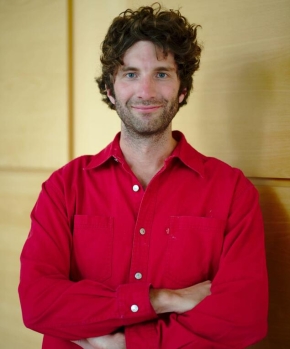Sigbjørn Løland Bore begins research stay at CAS
This week, Sigbjørn Løland Bore is kicking off his research stay at CAS, where he and his team aim to develop a machine learning model that can represent the intricate physics of ice from first principles.

Young CAS PI Sigbjørn Løland Bore (University of Oslo), began his two-month research stay at CAS this week. His project, titled "Can Ice Be Described From First Principles?", aims to bridge gaps between theoretical predictions and experimental observations in ice research.
"Ice plays a crucial role on Earth, from its presence in the polar regions to its impact on global climate and sea levels," Sigbjørn explains. The project focuses on developing machine learning models from first principles calculations, where current models fall short in accurately predicting ice's melting conditions.

During his stay, Sigbjørn and his team will pursue three primary objectives. "We will focus on setting up quantum calculations to determine the energy of ice as accurately as possible," he states, noting their collaboration with Jürgen Gauss, a world authority on electronic structure theory. The team will then develop a model based on the training set. “Finally, once we develop the model for ice, we need to demonstrate that it can ‘describe ice from first principles’. For this, Debdas Dhabal, an expert in the simulation of ice phenomena, will join us.”
Since the start of the Young CAS project, the group have made significant developments in algorithms and software. "We plan to submit an article within the first few days of our CAS stay, focusing on this framework known as adversarial active learning", Sigbjørn reports. “This is an iterative technique used to develop machine learning models for atoms by training them against adversarial atomic structures where the current iteration of the machine learning model is inaccurate”, he elaborates. The team has already successfully applied this technique to liquid water and now aims to extend it to ice structures.
An upcoming highlight of the research stay will be a symposium bringing together approximately 20 leading ice researchers from around the world, to discuss the latest and greatest in ice research. "The guests are very eager to attend, and I anticipate some great discussions," Sigbjørn shares.
“Additionally, I am looking forward to focusing on a single topic without distractions”. The timing of the research stay appears ideal, with Sigbjørn elaborating, "We have all the tools ready, along with the necessary expertise and resources, we just have to deliver." Beyond the scientific objectives, Sigbjørn views the research stay at CAS as an opportunity for professional growth: "I have already learned a great deal about research project administration and the organisation of research conferences, skills that have not come naturally to me but are improving day by day. I hope to further enhance these skills by the end of my CAS stay ".
We look forward to following Sigbjørn and his team's progress during their stay at CAS and sharing their upcoming activities and findings.